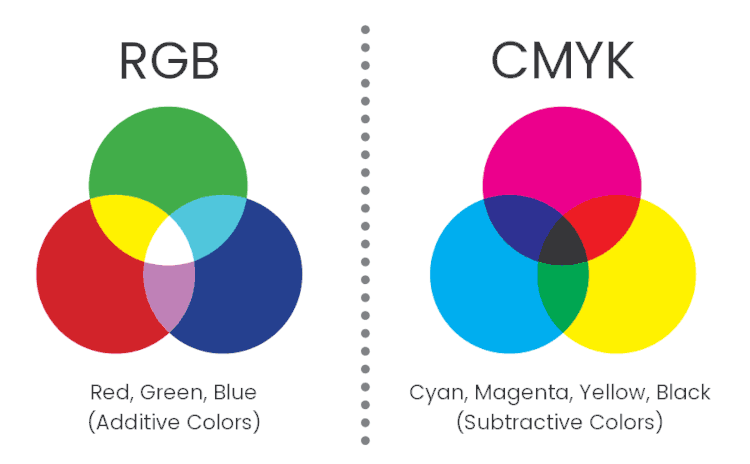What do all those letters mean?
RGB simply means Red, Green, Blue and CMYK stands for Cyan, Magenta, Yellow, Black. We don’t use ‘B’ for black because ‘B’ universally means ‘Blue’, so once upon a time someone decided to avoid some confusion and use K instead.
Both RGB and CMYK have their advantages, but each one is better suited for different types of projects.
RGB is used for digital images that will only appear on a screen, such as a TV, mobile phone, computer, etc. This is because, like RGB, screens use projective light, or additive color, to show us what we see. Screens are made up of tiny pixels, and each one of those pixels has a certain amount of Red, Green, and Blue to make up the image we see. If there was 0 Red, 0 Green, and 0 Blue all we would see is black, or the absence of light.
CMYK, on the other hand, is intended to be used for print. This is because CMYK is a subtractive process, which means the less color that’s added, the lighter the end color will be. The absence of any percentage of C, M, Y, and K means we’d see white, or the absence of color.

Fun fact: True black in CMYK is not just 0% CMY and 100% K. Remember that CMYK starts at white, so 100% K would actually produce a gray. True black in CMYK is achieved by using 75% C, 68% M, 67% Y, and 90% K.
CMYK produces accurate results on paper because it’s closer to how our own eyes perceive color. Printshops use a machine called a 4 color press to mix CMYK and produce the result you want. Some printshops though, like us, also use spot colors, so we can print an even wider variety of colors on our 6 color press in order to get your desired color right, every time.
